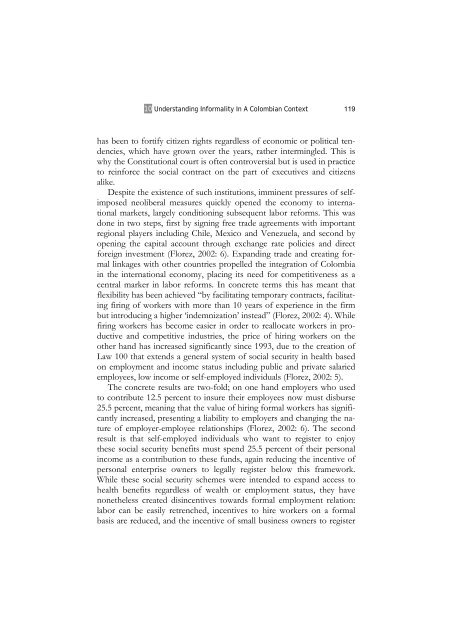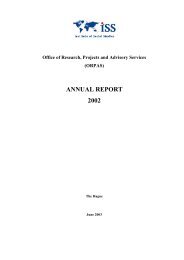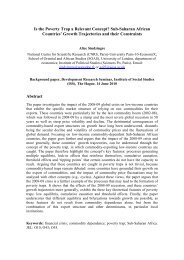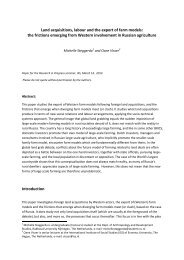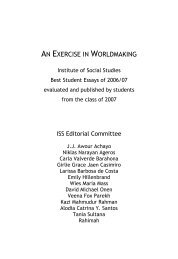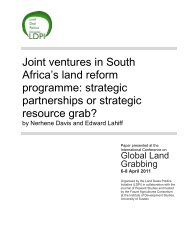AN EXERCISE IN WORLDMAKING 2009 - ISS
AN EXERCISE IN WORLDMAKING 2009 - ISS
AN EXERCISE IN WORLDMAKING 2009 - ISS
You also want an ePaper? Increase the reach of your titles
YUMPU automatically turns print PDFs into web optimized ePapers that Google loves.
10 Understanding Informality In A Colombian Context 119<br />
has been to fortify citizen rights regardless of economic or political tendencies,<br />
which have grown over the years, rather intermingled. This is<br />
why the Constitutional court is often controversial but is used in practice<br />
to reinforce the social contract on the part of executives and citizens<br />
alike.<br />
Despite the existence of such institutions, imminent pressures of selfimposed<br />
neoliberal measures quickly opened the economy to international<br />
markets, largely conditioning subsequent labor reforms. This was<br />
done in two steps, first by signing free trade agreements with important<br />
regional players including Chile, Mexico and Venezuela, and second by<br />
opening the capital account through exchange rate policies and direct<br />
foreign investment (Florez, 2002: 6). Expanding trade and creating formal<br />
linkages with other countries propelled the integration of Colombia<br />
in the international economy, placing its need for competitiveness as a<br />
central marker in labor reforms. In concrete terms this has meant that<br />
flexibility has been achieved “by facilitating temporary contracts, facilitating<br />
firing of workers with more than 10 years of experience in the firm<br />
but introducing a higher ‘indemnization’ instead” (Florez, 2002: 4). While<br />
firing workers has become easier in order to reallocate workers in productive<br />
and competitive industries, the price of hiring workers on the<br />
other hand has increased significantly since 1993, due to the creation of<br />
Law 100 that extends a general system of social security in health based<br />
on employment and income status including public and private salaried<br />
employees, low income or self-employed individuals (Florez, 2002: 5).<br />
The concrete results are two-fold; on one hand employers who used<br />
to contribute 12.5 percent to insure their employees now must disburse<br />
25.5 percent, meaning that the value of hiring formal workers has significantly<br />
increased, presenting a liability to employers and changing the nature<br />
of employer-employee relationships (Florez, 2002: 6). The second<br />
result is that self-employed individuals who want to register to enjoy<br />
these social security benefits must spend 25.5 percent of their personal<br />
income as a contribution to these funds, again reducing the incentive of<br />
personal enterprise owners to legally register below this framework.<br />
While these social security schemes were intended to expand access to<br />
health benefits regardless of wealth or employment status, they have<br />
nonetheless created disincentives towards formal employment relation:<br />
labor can be easily retrenched, incentives to hire workers on a formal<br />
basis are reduced, and the incentive of small business owners to register


